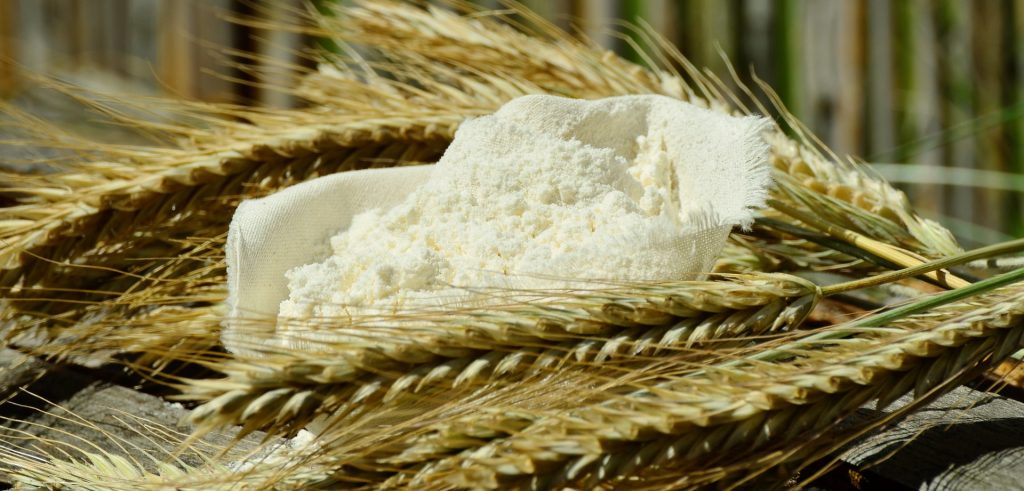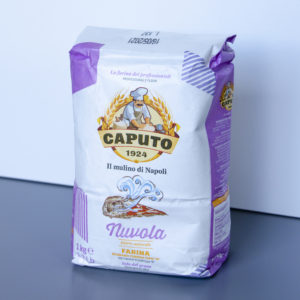Great pizza starts with great dough, and the secret lies in the flour. Flour is the most important ingredient, it’s therefore crucial not only to choose the highest quality flour but also the right flour for the pizza you want to make.
Double zero (Tipo 00) flour is the gold standard for Italian pizza, giving the dough the perfect balance of stretchiness, softness, and crispiness. In this post, you’ll learn why Tipo 00 is ideal for pizza baking, how it works, and which brands to choose for the best results.
What is Double Zero Flour?
Double zero flour, also called Tipo 00 flour, is Italian-milled wheat flour. Double zero (00) indicates how finely refined the flour is. There are four levels in the Italian scale: 2, 1, 0, and 00. 00 is the finest milled flour, and 2 is coarsest. Double zero flour is of higher quality and has the least amount of brand and wheat middlings. It can be made from a variety of different types of wheat, both soft and hard. The protein/gluten content will vary depending on the type of wheat the flour is made from, but it mostly ranges from 8-12%. For pizza baking higher protein flour made from harder wheat, such as durum, is more beneficial.

Pizza Baking
When you’re baking Italian-style pizza, you want flour with a protein content of around 10-12% to get an elastic dough. This will create a soft stretchy dough that’s easy to shape
Gluten in Pizza Flour
To understand why you want a high protein flour for pizza you need to understand how gluten works. Gluten is a group of proteins found in wheat. When you mix flour with water and start kneading the dough, gluten strands start to form. When you keep stretching and kneading the dough, the strands are getting longer and stronger. The result is stretchy and elastic pizza dough.
During kneading, small pockets will form in the dough. When the yeast starts to produce gas, during fermentation, the gases are trapped in these pockets. This process is what we call rising.
The more you knead the dough, the more the gluten develops. More gluten development means that the dough will get a crispier texture during baking because the gluten proteins are hardened when they are heated.
Strength of the Flour and the W Index
An important factor when you’re baking pizza is the strength of the dough. The strength of the flour is determined by the protein’s ability to develop.
The W Index
The strength of the flour is usually measured in the unit “W”, measured using a Chopin Alveograph. A Chopin Alveograph is a tool for measuring the quality of dough and was developed by Marcel Chopin in 1920.
The W index is proportional to the amount of gluten in the dough. A high W value means more gluten and a lower W value means less. With more gluten, the dough will retain more CO2. The reason is that the stronger gluten walls trap the gas produced during the fermentation process.
A higher W value means the dough requires a longer fermentation time. It also means the dough will keep its shape and structure for longer. This means that stronger flour is a better choice for slow fermentation. It’s therefore ideal for Neapolitan pizza, which typically is left to rise for 8-24 hours.
How Strong Flour Is Ideal for Pizza Baking?
The ideal strength for pizza flour depends on how long you want to rise the dough. If you want to do a fast fermentation you want a low W flour, and for long, slow fermentation you want a higher W flour.
Most flours don’t print the W value on the package, so I’ve made a table of the best flours for different fermentation times:
| Fermentation Time | Ideal Flour | Strength (W) | Ideal Hydration |
| 4-24 hours | Caputo Classica | W 220-240 | 60-70% |
| 12-36 hours | Caputo Pizzeria Caputo Nuvola | W 260-270 W 260-280 | 60-75% |
| 24-48 hours | Caputo Chef’s Flour | W 300-320 | 65-75% |
Optimal Dough Hydration
The optimal dough hydration also varies depending on the type of flour, because the water absorption varies. But a good starting point is 65% hydration.
Double Zero vs All-Purpose Flour for Pizza Baking
The higher protein content is the main benefit of the double zero flour over regular all-purpose flour. It is also finer, which helps the forming of gluten and makes the dough more elastic. A more elastic dough is also easier to work with. Making a thin, even pizza with all-purpose flour is a lot harder. The strength of double-zero flour also allows longer fermentation times, which is great for developing flavors. Another benefit of double zero flour is that the pizza crust gets crispier during baking because of the hardening of the gluten. Therefore double zero is a better choice for baking Italian pizza.
If you’ve ever tried, you can feel the difference when you’re kneading the dough. The finer Tipo 00 flour absorbs water better, and the dough will end up stretchier. It’s also much more pleasant to work with. The dough also tears less when it’s made with high-quality double-zero flour.
The Best Double Zero Pizza Flour
The most important when you choose double zero flour is to get high-quality flour, and that it’s strong enough for the fermentation time you’re looking for.
Caputo Pizzeria
Antimo Caputo is one of the best-known producers of Italian Tipo 00 flour. They have a good reputation for their high-quality pizza flour both by the local pizzerias in Naples, as well as amongst chefs around the world. Caputo 00 Flour is therefore the perfect flour both for professionals and home chefs who are serious about their pizza baking!
I agree with the local pizzaiolo of Naples, my top pick is therefore Caputo Pizzeria Tipo 00 Pizza Flour. Caputo Pizzeria is Caputos professional series pizza flour. The flour is a special blend of high-quality wheat meant for long-rise dough baked in high-temperature wood-fired ovens. And is perfect for 12-36 hours of fermentation.
Even though Caputo Pizzeria is advertised as a professional pizza flour, it’s also perfect for home chefs. It works great for homemade pizza baked on a pizza stone or
I experiment with different flours all the time, but I always have a bag of Caputo Pizzeria around. It’s very consistent and predictable and is in my opinion it’s the pizza flour.
Check out my full article on Caputo Pizzeria for more information.
Caputo Chef’s Flour
Another great alternative if you’re looking for longer more than 24 hours rising is Caputo Tipo 00 Chef’s Flour (affiilite link). This pizza is designed for baking in lower-temperature home ovens, rather than wood-fired ovens. But when I’m baking pizza on my
If you want to know more about Antimo Caputo and their pizza flours, check out our article Caputo 00 Flour: Everything You Need to Know.
Bottom Line
In conclusion, double zero flour is the type of flour used in Italy for a good reason. Double zero has the right protein content and is pleasant to work with since it’s finely ground. You should go for high-quality flour if you want to make the perfect pizza, and double zero is the way to go.
If you want to know more about pizza, check out our guide to Neapolitan pizza, or one of our recipes.
Related
- Is Your Pizza Dough Too Dry? Here is How to fix it! - June 10, 2024
- The Ultimate Guide to the Pizza Dough Windowpane Test - June 8, 2024
- The Ultimate Guide to Autolyse Pizza Dough - June 7, 2024




